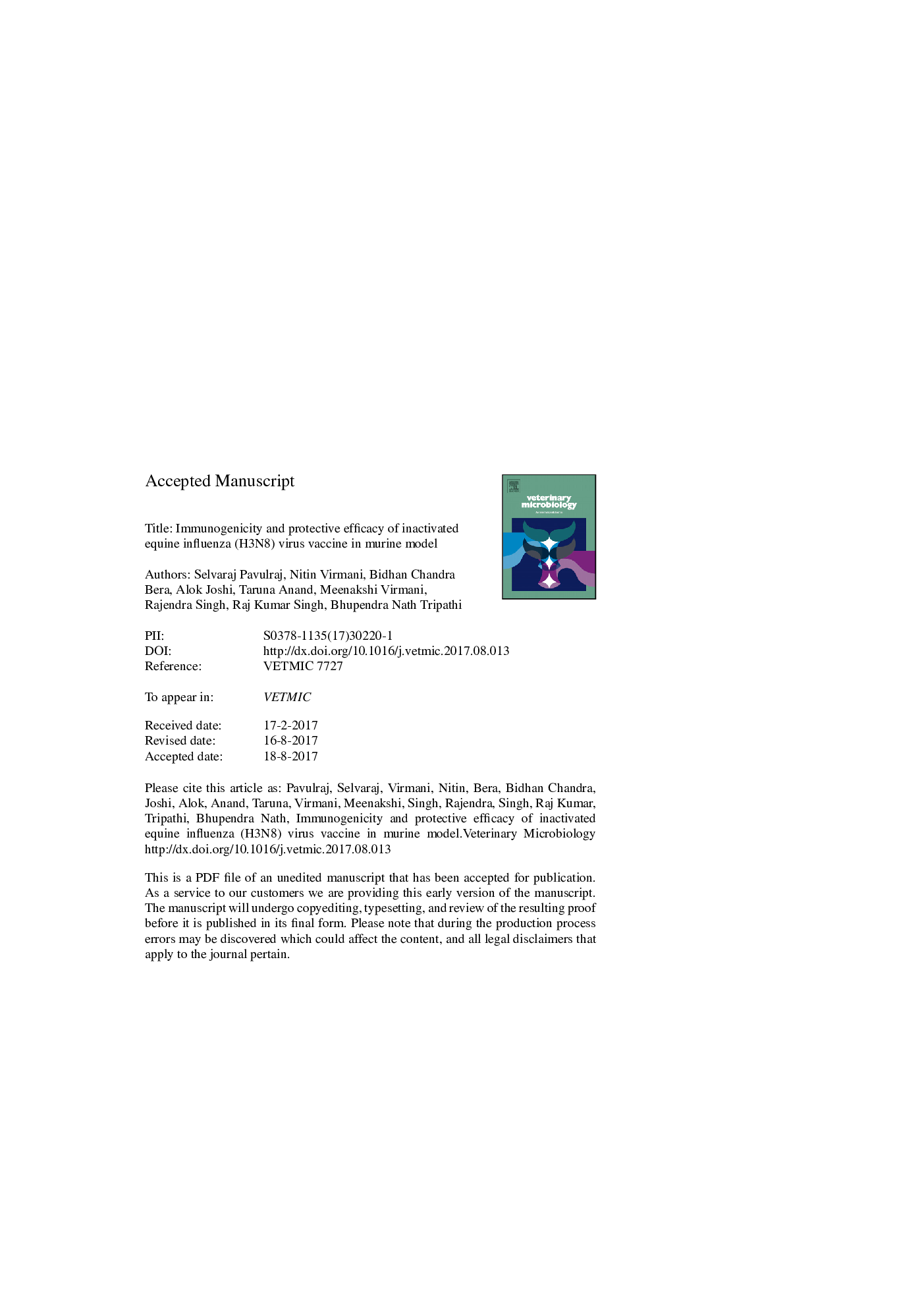| Article ID | Journal | Published Year | Pages | File Type |
|---|---|---|---|---|
| 5545091 | Veterinary Microbiology | 2017 | 30 Pages |
Abstract
Equine influenza viruses (EIVs) are responsible for acute contagious respiratory infection in equines and the disease remains a major threat for equine population throughout the world despite vaccination strategies in place. The present study was aimed to assess the suitability of BALB/c mice as a potential small animal model for preliminary screening of EI vaccine candidates. For this, we evaluated the immunogenicity and protective efficacy of an inactivated EIV (H3N8) vaccine in BALB/c mouse model after challenge with homologous H3N8 virus (Clade 2 virus, Florida sublineage) through serology, clinical signs, gross and histopathology lesions with grading, immunohistochemistry and virus quantification. Serological responses in immunized mice were evaluated by haemagglutination inhibition assay (HAI) and antibodies were subtyped by ELISA. The vaccine induced optimum protective antibody titre on 49 dpi along with balanced Th1/Th2 responses. Immunized mice were well protected against EIV challenge as evident by significant rise in serum antibody titre which concurred with mild clinical signs, early recovery, lower gross and histopathological lesions score, less severe intensity of viral antigen distribution, restricted virus replication in respiratory tract and less virus detection in nasal washes for short duration. The duration of the viral load was also lower and only for brief period as compared to unvaccinated challenged mice. In conclusion, induction of H3N8 specific antibody response and protection against H3N8 challenge proves that egg grown inactivated H3N8 whole virus vaccine would provide an effective intercession against H3N8 virus. In addition, BALB/c mouse can serve as an attractive tool for adjudging protective efficacy of vaccine candidates prior to final testing in equines.
Related Topics
Life Sciences
Agricultural and Biological Sciences
Animal Science and Zoology
Authors
Selvaraj Pavulraj, Nitin Virmani, Bidhan Chandra Bera, Alok Joshi, Taruna Anand, Meenakshi Virmani, Rajendra Singh, Raj Kumar Singh, Bhupendra Nath Tripathi,
